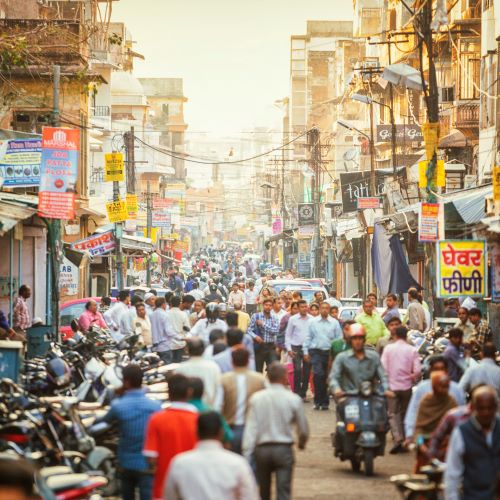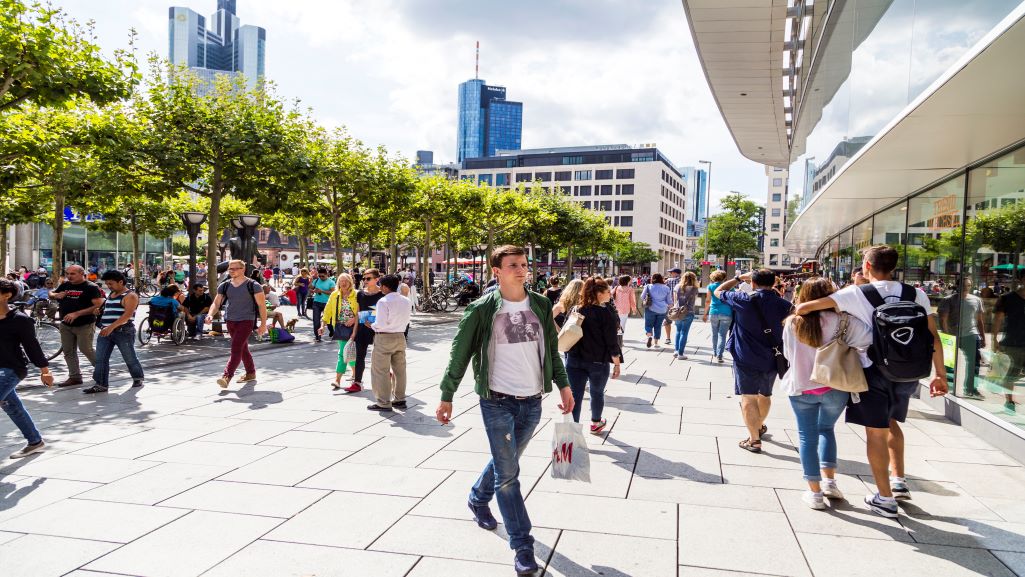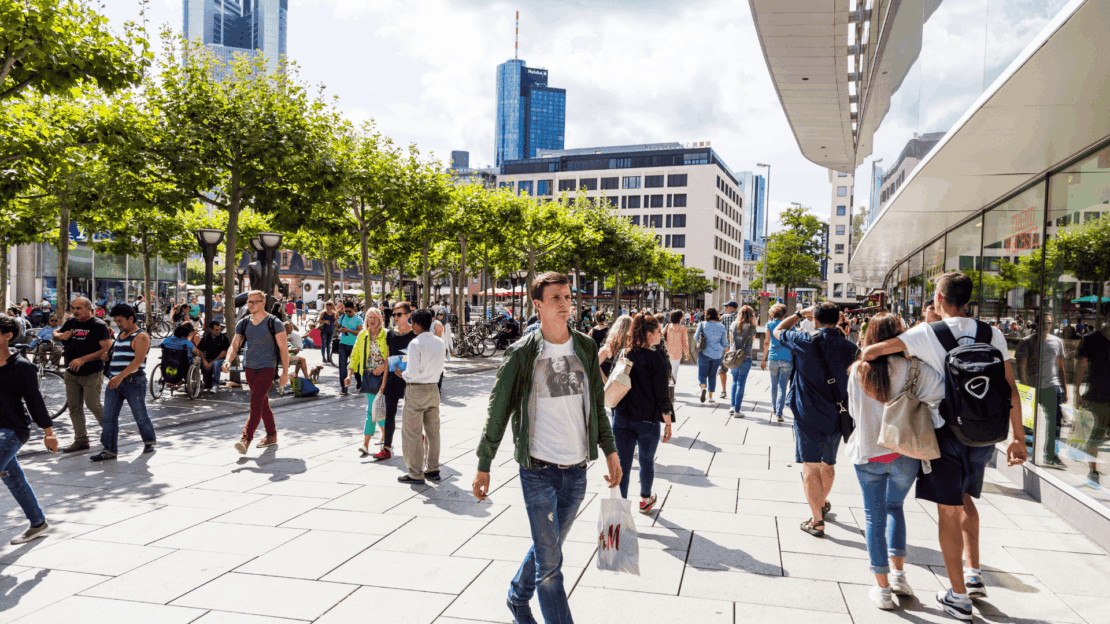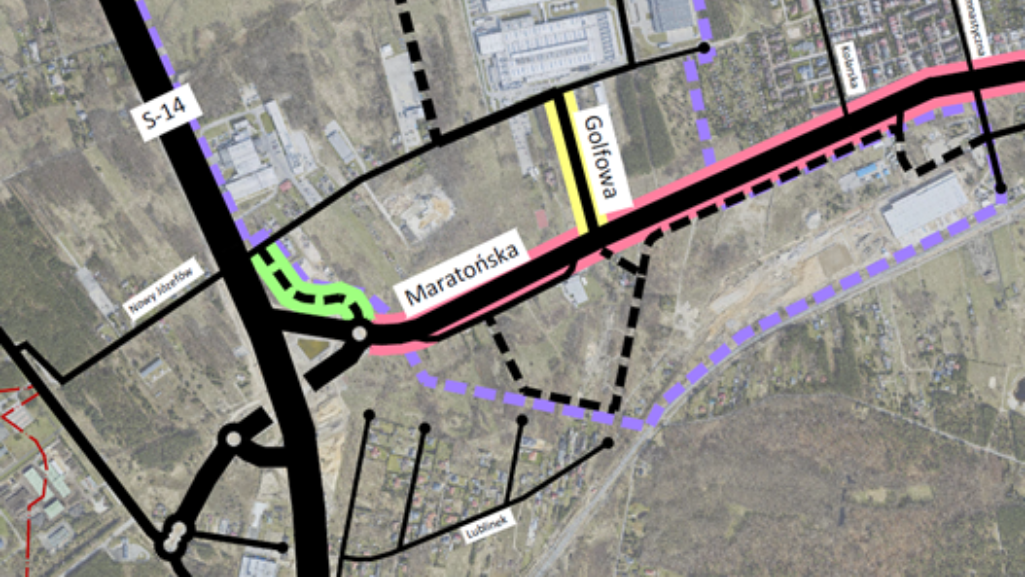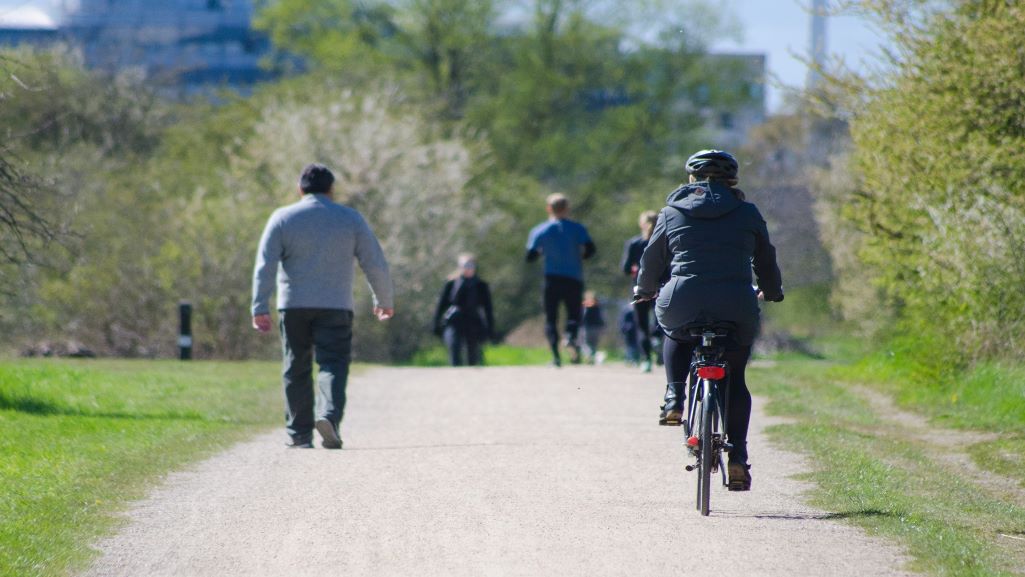The demand for pedestrian-friendly street design is growing: More and more cities aim to reduce congestion and become more eco-friendly, while public support grows for human-centered and less car-focused design of open spaces.
This poses a challenge for architects and mobility planners, as they try to figure out how to design pedestrian-friendly streets. Luckily, technology is catching up and is able to support them in this process.
Tobias Kretz, a Product Manager at PTV Group who specializes in pedestrian mobility, explains the process: ”The challenge is to make cities more attractive, and safer, for pedestrians. This often means to deal wisely with attractive and dense areas, that are narrow – and to meet all the mobility needs without reducing their attractiveness.”
He added that another challenge is ”when working to create people-friendly and eco-friendly mobility, planners often treat all non-motorized road users as one group. This almost inevitably leads to conflicts between pedestrians and cyclists, which then have to be resolved through additional measures.”
Key elements of pedestrian-friendly street design

To start with, here some of the elements needed to create a pedestrian-friendly street:
Space: People should have enough space to walk and interact with each other. Adequate walking space affects people’s comfort, safety, and willingness to remain in the public area. Experts estimate that for this purpose, the required minimum width of a sidewalk in a crowded street should be 2.5 meters. Here’s what London’s TfL Pedestrian Comfort Guidance has to say about this.
Human-centered: When we want more pedestrians to roam the streets, we need to stop thinking of them as spaces where motorized traffic is optimized. Instead, they should be turned into places where people want to walk or spend time in. In other words, pedestrianizing the streets. For this, streets need to offer as many activities as possible, and be tailored for diverse populations.
Connectivity: When a street is connected to other streets and places of interest, it ensures that more people will walk through it. That requires planners to ensure good walking links to the nearby streets, as well as to residential and commercial areas, and transportation options.
Accessibility and continuity: A walking area, that is not blocked or stops abruptly, provides comfort and safety for pedestrians. Such a pedestrian-friendly street should have space that is free from opened doors or merchandise from shops; it is advised that it includes curb ramps and anti-skid pavement materials.
Inclusiveness: Different mobility impairments require different measures. Wheelchair users require lowered curbs and generally step-free access. Others need to seat in regular intervals due to illness or old age. Families with small children will be happy when streets include both lowered curbs and seating.
Signalization: “Green waves” of traffic lights are a known measure to improve flow of vehicles, and even of cyclists. But what about a green wave for pedestrians? Sure, pedestrians walk in varying speeds, which makes it hard to plan effective green wave for everyone. Yet some signalization schemes can significantly reduce waiting times for pedestrians – here’s how PTV Viswalk software does so in the French city of Strasbourg.
Safe zones: To avoid being hit by cars, pedestrians and other vulnerable road users need to be protected. Creating safe zones is one major way to do it. Safe zones are comfortable for walking and cycling, with wide sidewalk and traffic-calming infrastructure. Here’s an example from Tanzania, on how a safe zone helps protect children walking in the streets.
Human scale: A pedestrian-friendly street design also needs to pay attention to the optics. It has to be on a “human scale”, meaning that at a walking speed the street still appears attractive. For example, that a square is no larger than “a mother can call her child on the opposite end”.
Shared road spaces: These are areas with where pedestrians, cars and cyclists share the street space without clear priority for anyone. Naturally, shared roads suit slow-moving and low volume vehicle traffic. Shared road spaces contribute to safety, according to research. But they are also a challenge for mobility planners, who must choose wisely streets that fit (and those who don’t) and implement there right traffic measures. It is a controversial concept: The streets allow pedestrians to take the shortest routes (no extra walking to reach crossings), but might be less safe than exclusive pedestrian zones.
Pedestrian plazas: Unused or inactive public spaces along a street can be quite easily turned into pedestrian-friendly plazas, where people can meet, sit, and interact. Those plazas can be created quickly, with installation of plants and street furniture. Pedestrian plazas also contribute to safety and the boost nearby businesses.
Shadow & drainage: good utilities make for good walking. That’s why pedestrian-friendly street design should also include conditions that enable people to be free from weather hazards as much as possible. Good drainage in rainy days, and shadow in sunny and hot days, will encourage people to ditch the car for walking – even when the weather is nor favorable.
Planning pedestrian-friendly street design
The planning process is crucial to the success of a new pedestrian-friendly street or area. Kretz, the PTV Group expert, explains that this task has many facets and is multi-disciplinary.
He added that PTV Viswalk software can help to find good traffic signal schemes, identify bottlenecks in crowded places, and tackle delays which follow from these measures.
The advantages of these early simulations are clear, says Kretz: “Generally speaking, trying out different proposed solutions is much cheaper with a software than with asphalt and steel. And simulated pedestrians will not complain when an idea that initially seemed plausible, doesn’t work as planned.”
